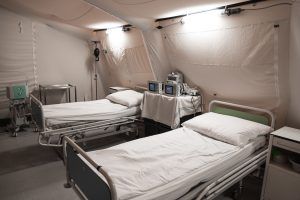The global shift toward sustainability has touched nearly every industry, with construction being no exception. More than ever, builders and architects are searching for innovative ways to create structures that fulfill their primary purposes and leave a minimal carbon footprint.
Hence, the modern construction landscape has embraced various sustainable methods, one of which is the use of engineered fabric buildings. This article explores sustainable construction by discussing the eco-friendliness and efficiency of these structures and why they’re becoming an industry favorite.
Reduced Environmental Impact
Fabric buildings play a significant role in reducing environmental damage. When you opt for them, waste production is minimized because the materials used in them are often recyclable, ensuring that very little goes to the landfill after use.
Moreover, the insulating properties of fabric buildings help maintain internal temperatures. This inherent characteristic reduces the need for excessive heating or cooling, decreasing energy consumption and costs.
Adaptability And Versatility
The advantages of fabric buildings don’t merely revolve around efficiency and sustainability. They boast an innate adaptability that’s hard to find in other construction methods. They can be easily adjusted to meet specific requirements. Whether there’s a need to expand, modify, or relocate the building, such changes can be achieved with minimal fuss.
Furthermore, their design versatility means they can be tailored for various purposes. Be it for agricultural setups, industrial applications, or recreational spaces, fabric buildings are exceptionally versatile.
Economic Viability
Beyond their environmental benefits and adaptability, fabric buildings also present a compelling economic argument. With fewer parts that require replacement and materials designed to stand the test of time, maintenance costs are generally lower than those of traditional structures.
The initial investment for fabric buildings is often more affordable than other construction types. Over time, the reduced maintenance needs and energy savings further cement the cost benefits of choosing fabric constructions.

Longevity And Durability
Given their seemingly delicate material, you might wonder about the longevity of fabric buildings. However, modern types are designed for endurance. High-quality fabrics resistant to wear and tear, combined with durable framing materials, ensure these structures last for years.
Moreover, their resistance to corrosion and other environmental factors reduces the chances of premature degradation, providing a long-term solution for various construction needs.
Innovation And Design Potential
Fabric buildings are at the forefront of architectural innovation. Their unique construction offers architects and designers an avenue to experiment, as the flexibility of the fabric allows for creative shapes and designs, breaking the monotony of traditional rectangular constructions.
Additionally, the potential to integrate transparent sections or play with light diffusion creates opportunities for aesthetically pleasing and functional designs.
Safety And Natural Lighting
The design of fabric buildings often incorporates translucency, allowing natural light to permeate the structure. It provides a brighter environment during the daytime and reduces the dependency on artificial lighting, thus saving energy costs.
Natural light has also been associated with increased productivity and well-being, making fabric buildings an excellent choice for work or recreational spaces. Furthermore, the uniform distribution of light can reduce shadows, improving safety for occupants, especially in settings like warehouses where visibility is crucial.
Weather Resistance And Climate Control
One of the many standout attributes of fabric buildings is their ability to adapt to various climatic conditions. These structures are engineered to handle the pressures of wind and even seismic activities. Also, the fabric’s tension surface repels rain and snow, ensuring the internal environment remains unaffected.
During hot weather, the fabric’s reflective properties help keep the interiors cooler. This built-in climate control makes these buildings energy efficient and ensures their inhabitants’ comfort.
Customization And Branding Potential
The versatility of fabric buildings extends beyond their adaptability and design. These structures present a unique opportunity for branding and customization. The external fabric can be tailored to display logos, brand colors, or any desired artwork, providing businesses with a distinctive identity.
Events and exhibitions can also utilize this feature to their advantage, setting up temporary installations that resonate with their theme and ensuring an immersive experience for visitors.
Acoustic Benefits
Sound dynamics within a building are crucial, especially in communal or workspace settings. Fabric buildings, with their unique construction, offer enhanced acoustic properties.
The fabric can absorb sound rather than reflect it, reducing noise levels. It makes them ideal for venues like exhibition halls or community centers, where controlling noise can significantly improve the overall experience.
Conclusion
Fabric buildings emerge as a top contender in the quest for more sustainable construction methods. Their efficiency, reduced environmental impact, versatility, and economic advantages make them an excellent choice for modern construction. As the industry evolves, you might find fabric buildings playing an even more prominent role in the green construction movement.












